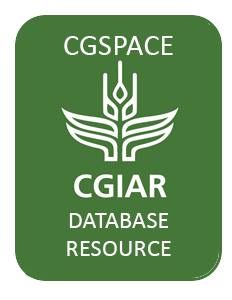Mission
To reduce hunger and poverty, and improve human nutrition in the tropics through research aimed at increasing the eco-efficiency of agriculture.
People
CIAT’s staff includes about 200 scientists. Supported by a wide array of donors, the Center collaborates with hundreds of partners to conduct high-quality research and translate the results into development impact. A Board of Trustees provides oversight of CIAT’s research and financial management.
Values
- Shared organizational ethic
- We respect each other, our partners, and the people who benefit from our work. We act with honesty, integrity, transparency, and environmental responsibility in all of our joint endeavors.
- Learning through partnerships
- We work efficiently and pragmatically together and with partners. Considering our diversity to be a key asset, we adapt readily to change and strive to improve our performance through continuous learning.
- Innovation for impact
- We develop innovative solutions to important challenges in tropical agriculture, resulting in major benefits for the people who support, participate in, and profit from our work.
Members:
Resources
Displaying 511 - 515 of 958Phosphorus fractions under different land-use systems in oxisols of the Brazilian cerrados
We examined whole-soil samples and particle-size fractions to study the distribution of different phosphorus (P) fractions after land-use change from native savanna to crops, pasture, and reforestation on clayey and loamy Oxisols of the Brazilian savannas. Phosphorus was extracted sequentially, according to a modified Hedley procedure, into inorganic and organic P (NaOH-extractable Pi and Po, respectively), and recalcitrant P (P HCl and P res). Under natural conditions of strong P deficiency, over 60% of NaOH-extractable P was organic, reflecting the high contribution of P.
Planeación y diseño de ensayos agropastoriles
Phosphorus pools in bulk soil and aggregates of differently textured oxisols under different land-use systems in the Brazilian cerrados
This study assessed the influence of land use (continuous cropping, CC; tree plantations, F; pasture, PG; and native savanna, NS) on P concentrations and partitioning in bulk soil and two aggregate size fractions of two Oxisols, one loamy and one clayey. The quantity and quality of physically protected P within aggregates were also determined. Total P in bulk soil and macroaggregates (0.25-2 mm and 2-8 mm) was partitioned into inorganic and organic P fractions (P, and P., respectively) after sequential extraction, using NaHCO, (Olsen), NaOH, HCl, and H2SO4 (residual).
Nueve instrumentos de apoyo a la toma de decisiones para el manejo sostenible de los recursos naturales
Microbial biomass, microbial activity, and carbon pools under different land-use systems in the Brazilian cerrados
In the Brazilian savannas, or Cerrados the rapid advance in agriculture and cattle ranching is affecting soils through, for example, accelerated erosion and depletion of soil organic matter (SOM). Changes in soil microbial biomass are good indicators of changes in SOM. We therefore assessed the effects of agricultural and pastoral use of a clayey Oxisol in the Cerrados on soil microbial biomass, and evaluated the usefulness of this parameter in studying SOM dynamics in savanna ecosystems.



